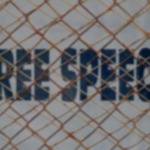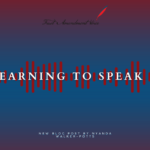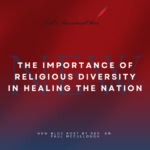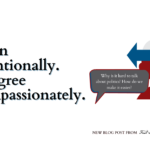
by Dan | May 16, 2018 | Uncategorized
 Compared to other forms of advertising, there are few restrictions placed upon online advertisements. Is this acceptable, or should we seek additional policy changes? Here are a few options we have available when considering how the First Amendment might regulate online ads:
Compared to other forms of advertising, there are few restrictions placed upon online advertisements. Is this acceptable, or should we seek additional policy changes? Here are a few options we have available when considering how the First Amendment might regulate online ads:
Option 1: Unrestricted Commercial Speech
The concept of commercial speech arose from a 1942 Supreme Court decision, Valentine v. Chrestensen. Since then, commercial speech rights have expanded to the point where corporations have similar free speech protections as U.S. citizens when it comes to the First Amendment.
In an online context, unrestricted commercial speech would likely mean that platforms hosting advertisements (such as Google or Twitter) decide what they believe is acceptable to advertise on their websites, with no external regulations coming from the government. On one hand, this could be advantageous because profit-seeking corporations have an incentive to avoid public backlash, which means they would likely avoid hosting advertisements for socially unacceptable products and services.
On the other hand, this option allows corporations full control over what advertisements consumers will or won’t see, which could lead to unnecessary censorship of certain political views or targeting children with advertisements, as YouTube was recently caught doing.
Option 2: Let the Public Decide
Democracy is a complicated process, but there are many avenues through which American citizens can make their voices heard. When it comes to online advertisements, public outrage against certain companies or platforms has prompted other corporations to pull their ads from various platforms like YouTube and Facebook. For instance, in 2017, YouTube lost millions of dollars after advertisements were shown alongside videos promoting terrorist activity and hateful speech.
There have also been Change.org petitions from members of the public demanding change from advertisers. While many corporations may choose to overlook any public outcry against them on social media or on Change.org, the visibility of public protests on petition sites can be useful for enacting changes to online advertising norms without the need for governmental intervention.
Option 3: Incremental Regulations from the Government
This approach to online advertising regulations is already happening right now. Through the Federal Trade Commission, the government regulates online advertising and other forms of speech, though currently there are fewer laws designed for Internet-based ads in comparison to traditional forms of advertising like print, radio and television. For example, barely any regulations exist for online campaign advertisements, while the Federal Communications Commission (FCC) regulates offline political advertisements.
Should online advertisements be subject to the same rules as print, radio and television advertisements? Perhaps this will be the case in the future, but for now, it remains largely uncharted territory for the marketing world, in which corporations dictate what they’ll allow or disallow. It’s ultimately up to us as consumers to utilize our First Amendment rights to speak out in favor or against unrestricted commercial speech online.

by Dan | Apr 26, 2018 | Uncategorized
 In a recent discussion panel with conservative student group Turning Point USA, President Trump said the on-campus free speech crisis is “highly overblown.”
In a recent discussion panel with conservative student group Turning Point USA, President Trump said the on-campus free speech crisis is “highly overblown.”
Specifically, Trump said, “If you look at what’s going on with free speech with the super left, with antifa, with all of these characters. I’ll tell you what, they get a lot of publicity, but you go to the real campuses, and you go all over the country, you go out to the Middle West, you go out even to the coast in many cases, we have a tremendous support. I would say we have majority support. I think it’s highly overblown. Highly overblown.”
Although a recent Gallup poll found the majority of college students support freedom of speech on their campuses, that same poll found that a majority of students also support restrictions against hate speech on campuses. Other research has shown college students and graduates actually support freedom of speech more than other demographic groups, and that support for our First Amendment rights has consistently risen over time (despite what present-day media reports might suggest).
So is the issue truly “overblown” like President Trump says it is? Consider these two perspectives:
Campus Diversity and Inclusiveness
On one hand, there’s the mentality that some groups of students have been historically oppressed or restricted from accessing the same educational and employment opportunities as other groups. In this sense, students believe there should be restrictions against hate speech targeting racial/ethnic minorities because they’ve already encountered this damaging treatment for decades, and that sexually-charged speech against predominantly female students should be considered harassment (and thus, banned) because it creates a fearful environment for those targeted by such comments.
As this humorous and informative video about political correctness from 8-Bit Philosophy explains, the climate of PC-ness might seem to be getting out of hand, but it’s not entirely bad. For instance, hate speech and verbal harassment on campus could drive students to drop out of college in fear for their safety. Advocates for restricting hate speech on college campuses thereby argue that doing so could offer a better learning environment and protect students against the negative psychological consequences of constant harassment.
Freedom of Speech for Political Minorities
In many universities across the U.S., students and faculty members are likely more liberal-leaning than conservative. From this perspective, conservative members of the campus community often feel as though they must restrain their speech and expression to avoid backlash from the politically correct crowd. Although there exist several conservative student clubs and organizations around the country, they tend to be outnumbered by their liberal counterparts.
It doesn’t help the issue that many college campuses limit free speech to certain designated areas and times of the day. These “free speech zones” have been ruled unconstitutional in several legal cases, but they nevertheless continue to exist on other campuses where they haven’t been challenged in court yet.
The question ultimately comes down to this: even if students largely disagree with certain viewpoints, should those viewpoints be marginalized or even silenced for the sake of political correctness or inclusion? Many First Amendment advocates say no, but the tension between freedom of speech and creating a safe learning environment for all students will likely remain a contentious issue for years to come.
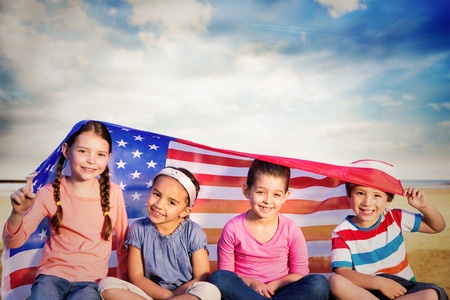
by Dan | Apr 11, 2018 | Uncategorized
 We hear a lot about free speech issues relating to college campuses, but what about K-12 students? Should they have full access to their First Amendment rights, or are they limited until they’re 18 years old and free from mandatory school requirements? Here are three big issues to consider:
We hear a lot about free speech issues relating to college campuses, but what about K-12 students? Should they have full access to their First Amendment rights, or are they limited until they’re 18 years old and free from mandatory school requirements? Here are three big issues to consider:
School Walk-Outs (freedom to petition)
On March 14 – one month after the Parkland shooting in Florida – students at 2,500 schools across the country planned a walk-out in protest of governmental inaction on gun control policies. However, some faculty members and school administrators threatened to suspend students who walked out of class because doing so could disrupt the learning process.
Does the freedom to protest only exist outside of regular school hours? There is no clear answer here, but it’s well-worth considering as students become more politically active in the future.
School Newspaper Censorship (freedom of press)
Freedom of the press is limited for school-sponsored newspapers, thanks to the 1988 Supreme Court decision (5-3) that determined student publications could be censored if the decision to do so was “reasonably related to a legitimate pedagogical purpose.” Unfortunately for students, the vague phrasing of the decision opened the gateway for school administrators to censor content based on largely arbitrary standards, as long as they attempted to justify the decision in line with the Supreme Court’s ruling.
Although some states have laws in place to protect student journalists’ rights to freedom of publication, many states still allow school administrators and faculty to control what is deemed publishable in a school newspaper. These instances of censorship have led organizations such as the Student Press Law Center to create resources for students who believe their First Amendment rights are being violated, and other students have ditched their school-sponsored publications in favor of online websites dedicated to informing the student body without the intrusion of administrators censoring their speech.
Praying in Public Schools (freedom of religion)
Although public school-sponsored prayers were deemed unconstitutional by the Supreme Court, religious expression is still available to students (in spite of the confusion surrounding students’ freedom of religious expression). Students can choose to pray (or not), create or join religious groups (as long as they don’t proselytize to other, non-consenting students), say “Merry Christmas,” and learn about different religions in the classroom.
Although common misperceptions of public schools as religion-free zones remain, K-12 students in public schools are largely protected when it comes to their First Amendment rights to freedom of religion (as long as they don’t disrupt classes or impose their beliefs on other students).

by Dan | Mar 28, 2018 | Uncategorized
 Free speech on college campuses is already a heated topic of discussion, but what about freedom of speech for teachers and professors at all levels of education? Should they be limited from exercising their First Amendment freedoms because they might influence their students’ world views? Here are some factors to consider:
Free speech on college campuses is already a heated topic of discussion, but what about freedom of speech for teachers and professors at all levels of education? Should they be limited from exercising their First Amendment freedoms because they might influence their students’ world views? Here are some factors to consider:
Public Versus Private Schools
One of the first considerations to make when it comes to teachers’ free speech in classrooms is whether the institution they teach at is public or private. Public schools and colleges have different regulations about freedom of speech (for students and instructors) compared with private schools, but should this make a difference? For instance, a privately funded religious university might object to one of their professors expressing anti-religious sentiments and subsequently fire them. This has happened several times over the last few decades, but the question still lingers: should the public/private status of a school or college dictate whether instructors are free to exercise their First Amendment rights?
Ideological Influence in Lectures
Free speech affects teachers of all academic subject areas. For instance, an adjunct science professor from San Jose City College lost her job in 2007 after students complained her lectures suggested that homosexuality results from nurture, rather than nature. When she sued the college, the judge stated in the ruling, “the precise contours of the First Amendment’s application in the context of a college professor’s instructional speech are ill-defined and are not easily determined.” The judge further argued that college professors could be punished if the college acted upon “legitimate pedagogical concerns.”
The issue of free speech for teachers and professors in the classroom remains highly contested in all levels of our nation’s legal system. Educators’ speech and expression has been limited by college policies and rejected in some cases, so we must ask ourselves: should instructors be prohibited from fully expressing their First Amendment freedoms to prevent their students from being ideologically influenced in the classroom?
Teachers’ Speech Outside of the Classroom
What if a teacher/professor utilizes their freedom of speech outside of the classroom (e.g., on social media) in a way that brings negative publicity to the educational institution they teach at? In 2017, several adjunct professors were fired for anti-Trump social media posts, which they had posted from their own personal profiles. Adjunct professors are in a particularly vulnerable position because they have no job stability (they can be offered 5 classes one semester and 0 the next semester, with no justification from the college required).
Other teachers with contracted jobs have also been fired for comments or social posts made outside of the classroom, but the question remains: Were they acting within their First Amendment rights, or did they overstep their ethical positions as educators by posting controversial material online?

by Dan | Mar 14, 2018 | Uncategorized
 On February 5, Representative Eric Swalwell introduced the Journalist Protection Act. This new bill proposal is designed to protect journalists’ efforts to investigate and report newsworthy events, which has become increasingly dangerous over the past couple of years, in both the U.S. and abroad. Since freedom of the press is a vital component of our First Amendment freedoms and the very fabric of our country’s democratic foundations, it’s important to understand how this act might change our highly polarized environment for the better.
On February 5, Representative Eric Swalwell introduced the Journalist Protection Act. This new bill proposal is designed to protect journalists’ efforts to investigate and report newsworthy events, which has become increasingly dangerous over the past couple of years, in both the U.S. and abroad. Since freedom of the press is a vital component of our First Amendment freedoms and the very fabric of our country’s democratic foundations, it’s important to understand how this act might change our highly polarized environment for the better.
According to Swalwell’s website, the Journalist Protection Act “makes it a federal crime to intentionally cause bodily injury to a journalist affecting interstate or foreign commerce in the course of reporting or in a manner designed to intimidate him or her from news gathering for a media organization. It represents a clear statement that assaults against people engaged in reporting is unacceptable, and helps ensure law enforcement is able to punish those who interfere with news gathering.”
This act is designed to prevent attacks on journalists in the course of their reporting and news gathering duties, which is inherent in the First Amendment but less protected in practice. It is currently supported by the Communications Workers of America (CWA) and the News Media for Open Government organization.
Although journalists are rarely killed in the U.S., many have been harassed or outright attacked while trying to gather information for their respective publications. As Bernie Lunzer, president of The NewsGuild, stated:
“This is a dangerous time to be a journalist. At least 44 reporters were physically attacked in the U.S. last year and angry rhetoric that demonizes reporters persists. The threatening atmosphere is palpable. The Journalist Protection Act deserves the support of everyone who believes our democracy depends on a free and vibrant press.”
Some attacks may have been politically motivated – one congressional candidate even body-slammed a reporter – but there’s no single cause for the increasing rates of harassment and violence against journalists. Some argue that President Trump’s anti-media rhetoric could be the cause, while others claim journalists are getting too nosy and should back off intensive investigations. Regardless of the causes, one thing remains clear: we need to protect our journalists to ensure our First Amendment press freedoms remain unobstructed.
Will the Journalist Protection Act solve all of our problems related to freedom of the press these days? Of course not, but it might be a good solution to prevent more reporters from facing serious harassment and even violence in their news gathering duties. As we’ve seen in other countries with even fewer protections for journalists, corruption, violence and even murder become prevalent when the rights of reporters are disregarded. Ultimately, if we want our free press to remain truly free, we need to protect those who are in charge of uncovering stories and getting the details we need to be informed citizens.

by Dan | Mar 5, 2018 | Uncategorized
 There is much debate over what is and isn’t protected under the First Amendment, but the issue becomes even murkier when you apply constitutional rights in an online context. Should the First Amendment regulate online speech or just leave it alone? Here are three relevant considerations to make:
There is much debate over what is and isn’t protected under the First Amendment, but the issue becomes even murkier when you apply constitutional rights in an online context. Should the First Amendment regulate online speech or just leave it alone? Here are three relevant considerations to make:
Problems with Algorithms
Commentators, politicians and others criticize the major platforms such as YouTube, Twitter and Facebook about their computer algorithms not doing enough to regulate appropriate content. While unregulated algorithms may seem like a good thing from the perspective of protecting universal free speech, this has led to some troubling incidents recently. For example, YouTube star Logan Paul’s infamous video of him laughing at a corpse in Japan’s suicide forest was available to audiences for a long time before it was removed. Additionally, a phenomenon known as “Elsagate” has become increasingly concerning, as young children are encouraged to click on videos with familiar cartoon characters, only to be presented with incredibly inappropriate videos after a few seconds’ introduction. On Facebook, algorithms are still struggling to parse out “fake news” from legitimate news, which has led to incidents like “Pizzagate,” in which a gun-toting man open fired on a pizzeria in Washington D.C. after believing a false online news report. Since there are real consequences to these expressions of speech online, there should probably be more improvements conducted on algorithms that regulate content for viewers of all ages. The tech firms say they are attempting to reign in inappropriate content. Others argue that society must be the ultimate arbiter of acceptable content and not rely on the tech firms to solve the problem.
Cyberbullying Dilemmas
Does the First Amendment protect those who harass, bully or anonymously send death threats to other people online? Offline, bullying is a serious issue, but the anonymity of online profiles has created a situation where accountability concerns are left in a moral gray area and protections for victims of cyberbullying are less stringent than those implemented in academic and professional environments.
Since cyberbullying is unlikely to go away anytime soon and has led to real consequences (higher rates of young adults feeling depressed or anxious, for instance), then perhaps we should rethink how we protect harmful speech written or spoken online. How can we as a civil society stop people from harassing others if they’re anonymous? Maybe a little transparency could help?
Political Disclosures
Finally, what can we do about political advertising that is paid for by foreign entities? Slate produced a great article on this subject, which discussed a new piece of legislation called the Honest Ads Act. If implemented, the Honest Ads Act would require large platforms like Twitter and Google to publicize the people and groups that purchased ads ($500 or more) for political elections. The act has not been debated or passed yet, but it could be a good remedy for preventing foreign influence in our country’s elections.
Follow FAV on social media or go to our website and let us know what you think. Joining the discussion is a great way to exercise your citizenship.

 Compared to other forms of advertising, there are few restrictions placed upon online advertisements. Is this acceptable, or should we seek additional policy changes? Here are a few options we have available when considering how the First Amendment might regulate online ads:
Compared to other forms of advertising, there are few restrictions placed upon online advertisements. Is this acceptable, or should we seek additional policy changes? Here are a few options we have available when considering how the First Amendment might regulate online ads:

 In a recent discussion panel with conservative student group Turning Point USA, President Trump said the on-campus free speech crisis is “highly overblown.”
In a recent discussion panel with conservative student group Turning Point USA, President Trump said the on-campus free speech crisis is “highly overblown.”
 We hear a lot about free speech issues relating to college campuses, but what about K-12 students? Should they have full
We hear a lot about free speech issues relating to college campuses, but what about K-12 students? Should they have full 
 Free speech on college campuses is already a heated topic of discussion, but what about freedom of speech for teachers and professors at all levels of education? Should they be limited from exercising their First Amendment freedoms because they might influence their students’ world views? Here are some factors to consider:
Free speech on college campuses is already a heated topic of discussion, but what about freedom of speech for teachers and professors at all levels of education? Should they be limited from exercising their First Amendment freedoms because they might influence their students’ world views? Here are some factors to consider:
 On February 5, Representative Eric Swalwell introduced the
On February 5, Representative Eric Swalwell introduced the 
 There is much debate over what is and isn’t protected under the First Amendment, but the issue becomes even murkier when you apply constitutional rights in an online context. Should the First Amendment regulate online speech or just leave it alone? Here are three relevant considerations to make:
There is much debate over what is and isn’t protected under the First Amendment, but the issue becomes even murkier when you apply constitutional rights in an online context. Should the First Amendment regulate online speech or just leave it alone? Here are three relevant considerations to make:
